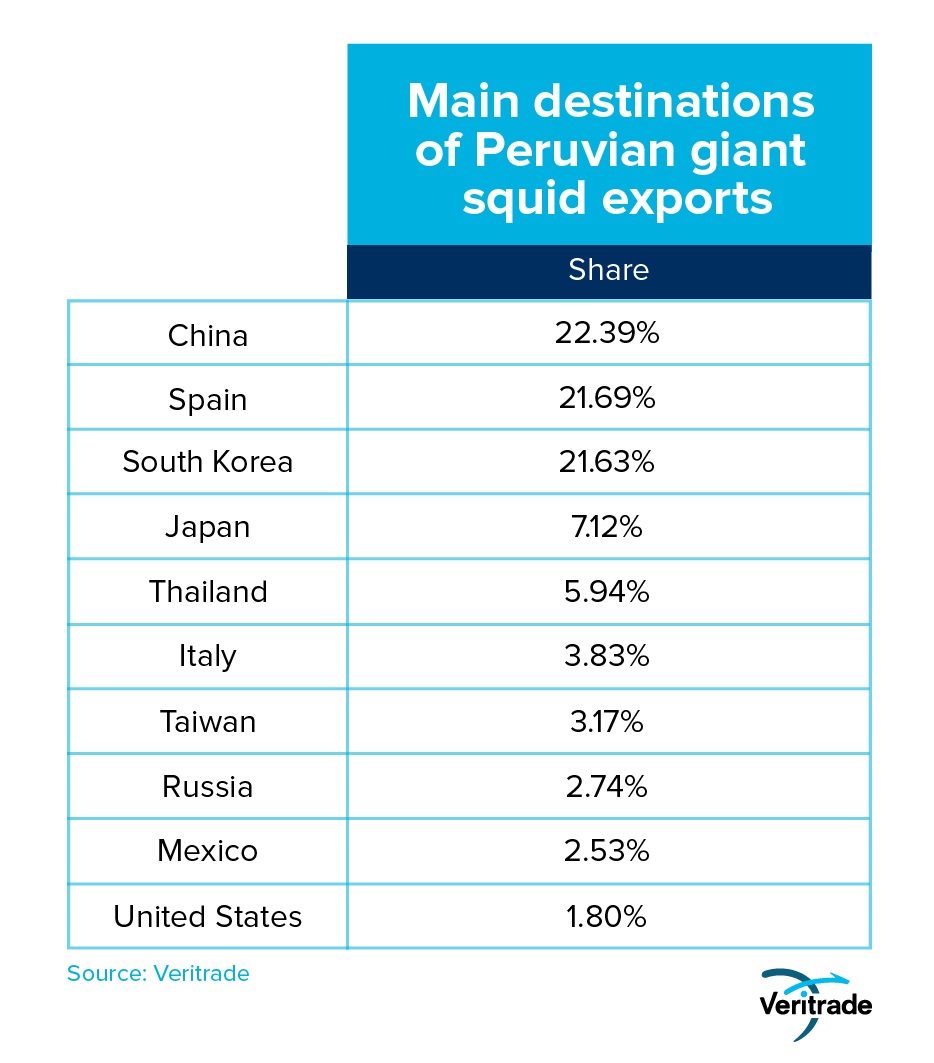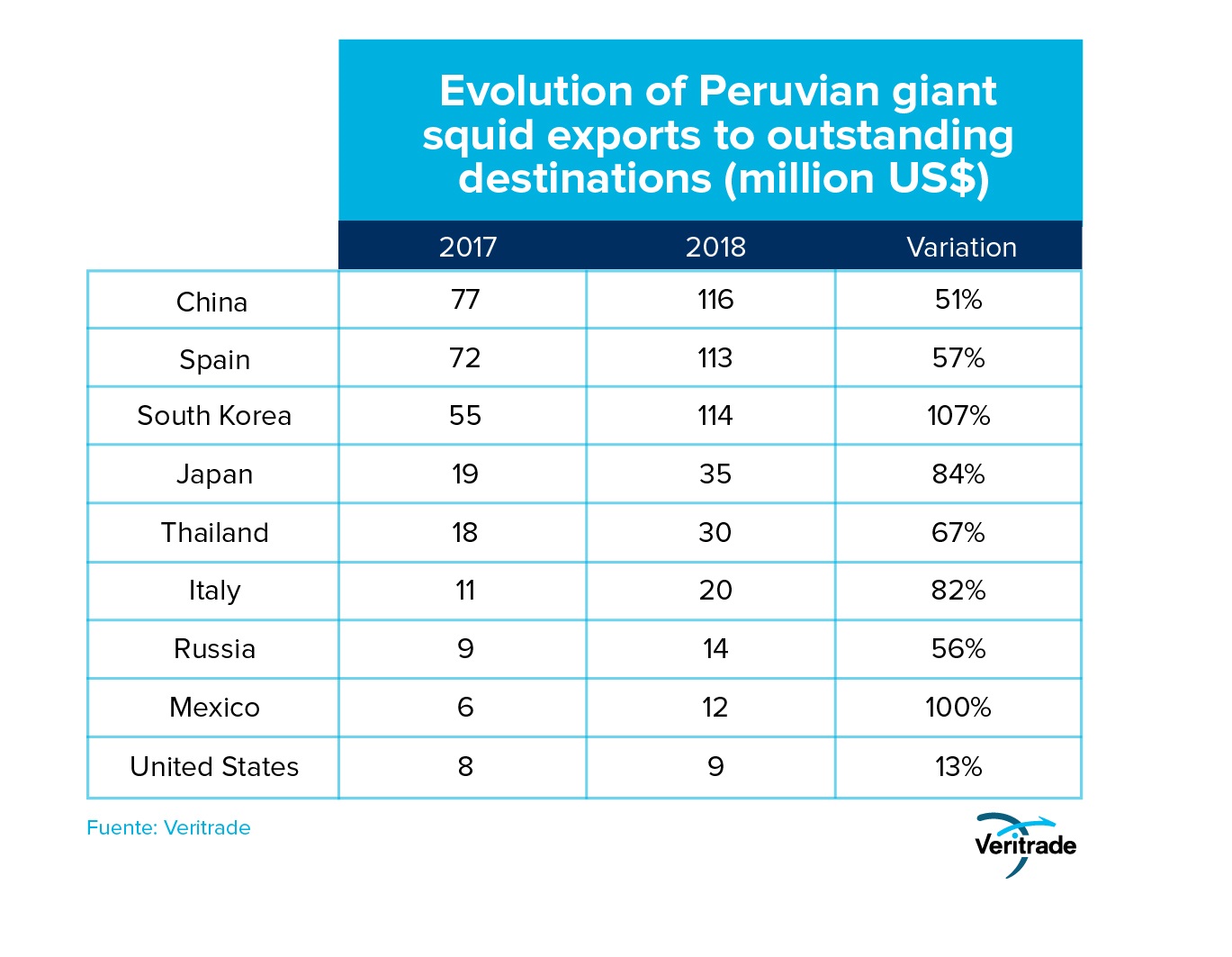Exports of Peruvian squid increase
Published on 04 June 2019
A detail of the performance of mollusc shipments to the main destinations shows the excellent results obtained during 2018.
Peru is one of the countries with the greatest hydrobiological richness in the world. The meeting of El Niño currents in the north and Humboldt in the south allows for a sea of diverse characteristics, with migratory and local species, fed by abundant plant and animal microorganisms, called phytoplankton and zooplankton, respectively.
Among the fish that abound in the coastline of 1.1 million square kilometers, almost equivalent to the 1.2 million square kilometers of total area of the country, anchovy is the one that is extracted in greater quantity. However, its main use is indirect human consumption, when it becomes fishmeal and fish oil.
Since the transformation of the Peruvian economic model towards an open economy in the 1990s, the direct human consumption industry began to develop with frozen, canned and processed products. Among these, which also include canned anchovy as a substitute for European sardine, have highlighted molluscs caught in the open sea and raised by aquaculture.
The diversification boom that the Peruvian export portfolio has had, and that gave rise to what is now known as non-traditional products (those other than metallic minerals, coffee and fishmeal), has included the use of markets with high purchasing power , both in heat and in volume. In this sense, the Peruvian fishery has expanded into new products such as the parakeet and, especially, the squid. In the following table, you can see the performance of exports of this product in the last two years.

As you can see, the value generated is quite considerable. In fact, pota represents 52% of Peru's non-traditional fishery exports, and is the second most extracted hydrobiological resource after anchovy.
At the moment, Asian countries are the main market. However, progress can be made even more in Europe and the United States if the development of an industrial fleet is facilitated, which provides the facilities to advance the processing with greater efficiency and safety. Also, this must go hand in hand with a strong control of the pressure applied to the biomass (the total available of the species in the sea), according to the recommendations of the Institute of the Sea of Peru (Imarpe) and the provisions of the Ministry of the production.
In the following tables, you can see which are the main export destinations of Peruvian Potato, and the evolution that has had the value of shipments:


The development of European and North American markets is still incipient. However, the search for healthy animal protein should be an incentive to make the most of the availability of resources offered by the Peruvian sea. It is expected that in the coming years, progress will continue in the consolidated destinations, and that more and more doors will be opened in high potential markets.
For more information on trade between North American countries, you can enter the Veritrade page.
Request your free trial by going to: https://bit.ly/2JYctDI